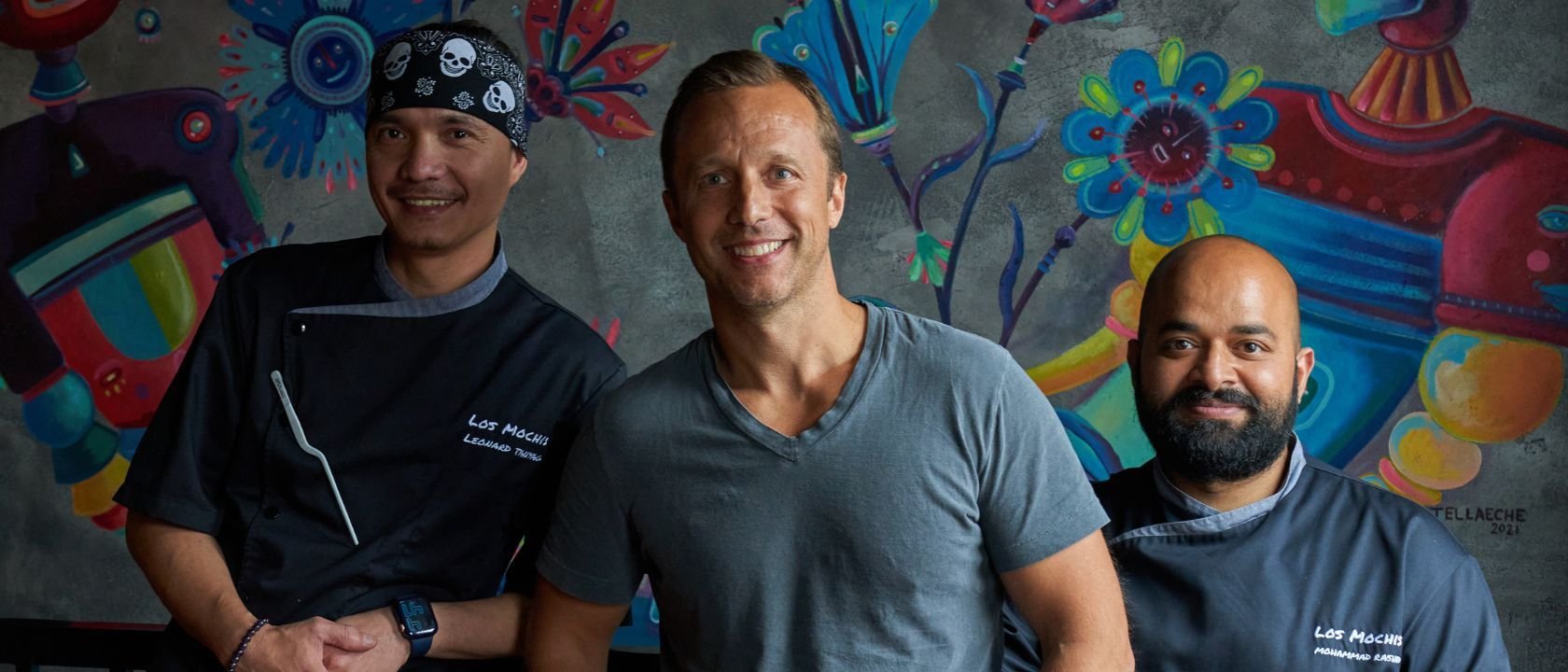Diversity and Inclusion in PR: Building a More Representative Industry
The public relations industry thrives on its ability to connect with diverse audiences, craft resonant messages, and foster an authentic understanding between brands and the public. It's an industry built upon the power of communication and relationships; however, it faces internal dialogue regarding diversity and inclusion.
Historically, the PR sector has struggled with diversity, often lacking representation across various groups – a shortfall that can lead to a narrow approach to storytelling and engagement strategies. Recently, a spotlight has been thrown on the importance of fostering a diverse and inclusive workforce within the industry that truly reflects society's multifaceted fabric.
This article aims to unpack the current state of diversity in public relations, illustrating why a rich tapestry of perspectives is a moral imperative and a strategic advantage. We will explore the ongoing challenges the industry faces, the steps organisations are taking to become more inclusive, and the success stories that highlight the transformative power of diversity in PR.
By committing to diversity and inclusion, the PR industry can ensure it speaks to all audiences and with the voices of all audiences. It's a journey of transformation, an evolution towards a more representative and effectively communicative industry, embodying the principles of openness and engagement that lie at the heart of public relations.
The Importance of Representation in PR
The imperative for representation in public relations cannot be overstated. A diverse PR industry ensures a chorus of voices, experiences, and perspectives that mirror the populous it serves, and it's vital for the authenticity and effectiveness of its initiatives.
A well-represented public relations industry is critical to the creation and dissemination of inclusive, resonant narratives. Diversity within PR teams not only enriches the profession but also ensures that campaigns reflect the vast tapestry of human experience, which is particularly important in an ever-diversifying global market.
Having a variety of perspectives within a PR team can significantly enhance the crafting and delivery of messages. A diverse group brings different insights and experiences, which can lead to more creatively robust and culturally sensitive campaigns. These teams are better equipped to predict and mitigate issues of cultural insensitivity and accurately represent the voices of all segments of the population.
Moreover, a diverse PR workforce can more effectively engage with a broader audience. By understanding the nuances of different cultures, languages, and lived experiences, PR professionals can build campaigns that truly speak to the intended demographics. This connection not only fosters trust and authenticity but can also be the key to tapping into new markets and audiences.
Representation in PR goes beyond mere demographic variety; it is about creating an industry where everyone has a voice, and where that voice can articulate the diverse values, wants, and needs of a multifaceted audience. It’s about shaping messages that do not just sell but also tell a story that everyone can see themselves in. With diversity at its core, the PR industry stands to not only communicate more effectively but to also drive social change, champion inclusivity, and craft a narrative that mirrors the rich diversity of the world it aims to engage.
Assessing the Industry's Diversity Challenges
The public relations industry, like many other sectors, has faced its share of diversity challenges. Recognizing and addressing these issues is fundamental to developing a more inclusive and representative PR field.
Historically, the PR industry has seen a lack of diversity across various dimensions, including race, gender, sexual orientation, and disability. This homogeneous landscape can result in a narrow scope of viewpoints, reducing the industry's ability to connect with diverse audiences and limiting its creative potential.
Today, the barriers to a more diverse and inclusive PR environment often manifest as structural issues within companies. Recruitment biases, unequal advancement opportunities, and pay disparities are just some of the hurdles that contribute to the underrepresentation of diverse groups in PR. Adding to the complexity is a sometimes limited understanding of what true inclusivity means, which can lead to superficial diversity efforts that fail to address deeper systemic issues.
The implications of such challenges are far-reaching. A PR workforce that does not reflect the diversity of society can struggle to design campaigns that resonate with all audience segments. Additionally, a homogenous industry risks perpetuating stereotypes and missing out on the innovative thinking that diversity can spark.
Efforts towards a more inclusive industry involve not just tackling these challenges head-on but also rethinking the organizational cultures and norms that allow them to persist. This includes fostering an environment where diverse talent is sought, valued, and nurtured. By addressing the current diversity challenges with thoughtful and sustained action, the PR industry can better serve its increasingly diverse stakeholders and maintain its relevance in the dynamic landscape of global communication.
Steps Towards Inclusivity
Embarking on the path towards greater diversity and inclusivity within public relations involves a series of intentional steps. These actions are designed to dismantle barriers and cultivate an environment where a multitude of voices and experiences are not only welcomed but are instrumental to the PR process.
Here are key initiatives that agencies and departments can undertake to foster inclusivity:
Enhance Diversity Training
Implement regular diversity and inclusion training for all employees to raise awareness about unconscious biases, cultural sensitivities, and the benefits of a diverse workplace.
Revise Hiring Practices
Update recruitment processes to attract a broader range of candidates. This might include partnerships with diverse professional organizations, the use of inclusive job descriptions, and unbiased interviewing techniques.
Champion Mentorship Programs
Create mentorship opportunities that connect established PR professionals with newcomers from underrepresented groups to facilitate knowledge sharing, networking, and career advancement.
Commit to Transparent Progress
Set clear diversity goals and regularly report on progress. Transparency holds the organization accountable and showcases a genuine commitment to making real changes.
Encourage Diverse Leadership
Promote diversity within leadership positions to ensure that decision-making reflects a range of perspectives and experiences.
Engage in Community Outreach
Foster connections with the community through outreach programs, sponsorships, or partnerships, which can enhance the brand's appeal to diverse audiences and create recruitment pipelines.
Taking these steps illustrates a forward-thinking approach to PR—one that understands the intrinsic value of diverse insights in crafting messages that resonate with a wide array of audiences. Inclusion is a journey requiring ongoing commitment and action, but the destination of a more representative and effective public relations industry is well worth the effort.
Success Stories: Real-Life Examples of Diverse and Inclusive PR Practices
Throughout the PR industry, there are inspiring real-life examples where diversity and inclusion have not only been embraced but have also played a pivotal role in the success of campaigns and the growth of agencies and brands.
Unilever's "United We Stand" Campaign:
Unilever's Lynx brand (known as Axe in some countries) launched the "United We Stand" campaign to promote unity and inclusivity among men.
The campaign featured a diverse cast and challenged stereotypes of masculinity, contributing to a broader conversation about gender norms and earning widespread media coverage.
Weber Shandwick's Diversity and Inclusion Network:
Global PR firm Weber Shandwick has been recognised multiple times for its commitment to diversity, including initiatives like its Diversity and Inclusion Network.
The firm has implemented policies focused on hiring and retention, mentorship, and employee resource groups for underrepresented employees, which has enhanced team creativity and client service.
Edelman's Trust Barometer and the Focus on Inclusive Communication:
Edelman’s annual Trust Barometer has highlighted the importance of inclusive communication, leading the agency to prioritize diversity in its practices and client work.
Their approach to inclusive campaigns has allowed them to better serve a global clientele and address a range of stakeholder concerns authentically and effectively.
These success stories demonstrate how prioritising diversity and inclusion can lead to more resonant PR campaigns and a stronger brand reputation. Through intentional commitment and strategic implementation, these organisations serve as role models in the push towards a more diverse and inclusive PR industry.
Overcoming Unconscious Bias in PR
In the pursuit of a more inclusive public relations industry, recognizing and addressing unconscious biases is essential. These biases can subtly influence decision-making, hindering diversity and limiting the reach and effectiveness of PR campaigns.
To dismantle unconscious biases in PR practices, consider the following approaches:
Acknowledge and Educate
The first step is acknowledging that unconscious biases exist. Regular training and workshops can educate employees about their biases and how to counteract them.
Implement Bias-Reduction Practices
Integrating procedures that mitigate bias, such as blind reviews of job applications and diverse hiring panels, can help create a more equitable workplace.
Promote Diverse Team Building
Assembling teams with members from varied backgrounds can reduce groupthink and foster innovative thinking, leading to more effective PR strategies.
Cultivate an Inclusive Culture
Developing a company culture that celebrates differences and promotes inclusivity is vital. Inclusive cultures encourage diverse viewpoints and collaboration.
Foster Diverse Client Relationships
By working with a diverse range of clients, PR professionals can gain broader perspectives and experiences that diminish biases.
Regularly Reassess Practices
Continually evaluate and update PR practices to ensure they support diversity and inclusivity, addressing any biases that may emerge as the industry and society change.
Combating unconscious bias requires sustained effort and commitment but can significantly enhance the quality and scope of PR initiatives. As the industry evolves toward greater inclusivity, addressing these biases is not just ethically imperative but a strategic business decision that can open new pathways for creativity and connection with audiences.
The Role of Leadership in Fostering Diversity
Leadership sets the tone for organizational culture and priorities, and in the context of diversity in public relations, the influence of those at the helm is especially critical. Leaders are not only decision-makers but also role models whose actions and attitudes can significantly promote or hinder the pursuit of diversity.
Here’s how leadership can actively foster diversity in PR:
Lead by Example
Leaders should embody the principles of diversity and inclusion in their actions and decisions, setting a precedent for the rest of the organization.
Develop Clear D&I Policies
Leadership must establish and communicate clear diversity and inclusion policies, providing a framework for the organization's commitment to these values.
Allocate Resources
For diversity initiatives to be effective, leaders must allocate the necessary resources, including funding for training, recruitment, and community outreach programs.
Encourage Diverse Hiring at All Levels
Leaders should advocate for diversity in hiring, particularly in senior positions. A leadership team with diverse backgrounds can offer a variety of perspectives and better understand the needs of different stakeholders.
Recognize and Reward Efforts
Acknowledging and rewarding efforts that contribute to a more diverse and inclusive workplace can reinforce the importance of these initiatives.
Maintain Open Dialogue
Transparent communication about the challenges and successes in achieving diversity goals can build trust and encourage participation from all organizational levels.
Measure and Monitor Progress
Leadership should regularly review diversity metrics to measure progress and make data-driven improvements where needed.
When leaders are actively involved in fostering diversity, their endorsement can accelerate the integration of these principles throughout the organization. As the PR industry continues to evolve, leaders who prioritize diversity and inclusivity will be instrumental in building a more representative and successful future for their organizations.
Measuring Progress: Diversity and Inclusion Metrics
Effective measurement is crucial in charting progress towards greater diversity and inclusivity within any industry. In public relations, where perception and reputation are everything, setting benchmarks and evaluating performance against diversity and inclusion metrics is particularly important.
Overview of How Progress in Diversity and Inclusion Can Be Measured and Tracked:
Introduce key metrics for measuring diversity in the workforce, including the demographic composition of staff at various levels and the inclusivity of the workplace environment.
Discuss the importance of also evaluating the diversity reflected in campaigns and media output.
Discuss the Importance of Setting Goals and Assessing Outcomes:
Highlight how setting clear, quantifiable goals for diversity and inclusivity can help organizations focus their efforts and track progress.
Review the value of measuring outcomes, not just outputs, to understand the impact of diversity on the effectiveness and reach of PR campaigns.
Measuring progress in diversity and inclusion is more complex than simply ticking boxes; it's about assessing whether the collective array of backgrounds, experiences, and perspectives are being valued and leveraged for success. By continuously evaluating these metrics, PR agencies and departments can hold themselves accountable, celebrate wins, and identify areas for improvement, ensuring that diversity and inclusion remain at the forefront of their strategic agenda.
Challenges and Opportunities for the Future
As the public relations industry endeavours to enhance diversity and inclusion, it faces both enduring challenges and emerging opportunities. Addressing these challenges while capitalizing on the opportunities is crucial for building a more representational industry.
Continuing to Break Down Barriers
While significant progress has been made, systemic barriers to diversity and inclusion remain. These include residual biases in hiring, disparities in career progression, and a corporate culture that may not always support diversity initiatives. Ongoing efforts to dismantle these barriers are essential.
Adapting to Demographic Shifts
As global demographics continue to shift, PR professionals must adapt to meet the changing needs and perspectives of diverse audiences. This requires an awareness of global cultural trends and a commitment to reflective representation within PR teams.
Creating More Accessible Pathways
The industry must continue to create pathways that enable individuals from underrepresented groups to enter and succeed in the field. This includes mentorship programs, internships, scholarships, and community outreach efforts that introduce PR as an attractive and viable career option.
Leveraging Technology and Innovation
Technological advancements present new opportunities for fostering diversity and inclusion. For instance, remote work can break down geographical barriers, allowing a more diverse range of talents to contribute to the industry.
Anticipating Future Challenges
The PR industry must stay ahead of potential future challenges that could impact diversity efforts, such as economic downturns or shifts in media landscapes, and plan accordingly.
Embracing Global Perspectives
As organizations increasingly operate on a global scale, embracing a multitude of perspectives will be an invaluable asset for PR professionals. This broad outlook can lead to more innovative and inclusive campaigns that resonate worldwide.
Looking to the future, the PR industry has the opportunity to become a leader in diversity and inclusion. By tackling existing challenges and embracing new opportunities, the industry can not only enhance its own creative and strategic capabilities but also set an example for other fields to follow.
Forging an Inclusive Path in Public Relations
As we reflect on the importance of diversity and inclusion in the PR industry, it's clear that the journey is ongoing. The narrative of progress is being written by those willing to confront challenges head-on and seize opportunities to enact meaningful change.
In moving forward, the industry must continue to embrace the differences that make each story, each campaign, and each unique. We've highlighted the steps being taken, the success stories that inspire, and the metrics that hold the industry accountable. Yet, the drive towards a more inclusive PR industry is a collective responsibility that requires persistent effort and genuine commitment at every level.
The future of public relations is not only about broadening the spectrum of voices within the industry but also about ensuring those voices are heard, valued, and have an impact. By fostering diversity and inclusion, PR can remain a dynamic and relevant force in a world that demands brands not only speak but also listen and respond to an increasingly diverse audience.
In conclusion, diversity and inclusion in PR are not mere buzzwords; they are the pillars of an industry poised to grow in relevance and resonance. By forging an inclusive path today, the PR professionals of tomorrow will inherit an industry rich in perspectives and poised for innovative communication breakthroughs that truly reflect the kaleidoscope of human experience.


































